#xamarin application
Explore tagged Tumblr posts
Text
Why Mobile App Development is Essential for Business Growth in 2025

In a digitally connected world, mobile apps are at the heart of customer engagement, brand visibility, and business growth. Organizations of every size and industry increasingly rely on mobile applications to reach customers, streamline operations, and enhance their competitive edge. At Mobiloitte, we specialize in providing robust Mobile Application Development Services tailored specifically to your business needs. Whether it's native app development for Android and iOS, versatile hybrid solutions, or innovative blockchain mobile app projects, we deliver
advanced solutions that help your business thrive in a competitive digital landscape.
Why Choose Mobile Application Development Services?
Businesses today must engage their customers in a personalized, seamless digital experience. Custom mobile apps create meaningful connections by providing users with intuitive, accessible, and interactive platforms. Our comprehensive Mobile Application Development Services are designed to turn your vision into reality, driving measurable results:
Enhanced User Experience (UX): Customized mobile apps provide users with intuitive, engaging experiences tailored to their preferences.
Increased Customer Engagement: Real-time notifications, personalized interactions, and immersive content strengthen customer loyalty and brand visibility.
Operational Efficiency: Automating business processes through mobile apps significantly reduces manual workloads, increasing overall productivity.
Improved Scalability: Customized applications easily scale to match growing business demands, ensuring your investment remains relevant long-term.
Android App Development: Reaching Broader Audiences
With a global market presence, Android remains a dominant player in the mobile ecosystem. Our Android App Development solutions deliver highly functional, reliable, and scalable apps. Leveraging Java, Kotlin, and industry-leading frameworks, Mobiloitte’s Android development team creates innovative apps with superior performance. Whether your business is targeting regional markets or a global audience, our Android solutions ensure high visibility, user retention, and sustained growth.
iOS Mobile App Development for Premium Experiences
iOS users are known for their higher engagement rates and willingness to invest in quality apps. Mobiloitte’s dedicated iOS Application Development services help businesses capitalize on Apple's premium user segment. We design sleek, responsive apps that integrate seamlessly with Apple’s ecosystem, ensuring maximum user satisfaction and revenue potential. From iPhone to iPad, our applications uphold Apple's stringent quality standards, enhancing your brand’s reputation in the marketplace.
Hybrid App Development Services: Efficiency and Flexibility
Businesses seeking cross-platform compatibility with cost-effective solutions often choose our Hybrid App Development Services. Hybrid applications use a single codebase across multiple operating systems, offering substantial cost and time savings. With frameworks like React Native and Flutter, Mobiloitte’s hybrid solutions ensure your app functions seamlessly on both Android and iOS. Hybrid apps offer rapid deployment, reduced development costs, and simplified maintenance, making them ideal for businesses prioritizing efficiency without compromising quality.
Cross-Industry Expertise with Custom Mobile Apps
As an experienced mobile game development company and mobile solutions provider, Mobiloitte understands diverse industry needs. We develop applications across multiple sectors—healthcare, finance, gaming, retail, education, and more. Our deep cross-industry expertise ensures your app aligns perfectly with your strategic goals and market demands. With a focus on customized solutions, we design apps uniquely suited to your business model, ensuring exceptional performance, security, and engagement.
Blockchain Mobile App Development: The Next Frontier
Blockchain technology is transforming various industries, and Mobiloitte stands at the forefront, offering comprehensive blockchain mobile app development services. Leveraging blockchain’s inherent security, transparency, and traceability, our blockchain mobile apps are ideal for secure transactions, decentralized applications, and next-generation fintech solutions. By incorporating blockchain technology, your mobile application gains heightened security, faster transactions, and increased user trust, positioning your business as an industry innovator.
Custom Mobile Application Development: Tailored for Success
Customized solutions provide superior results compared to generic apps. Mobiloitte’s custom mobile application development services ensure that each application is tailored to match your exact business objectives, brand identity, and target audience. We utilize agile methodologies and maintain close client collaboration, resulting in apps precisely aligned with your vision and objectives. Our development lifecycle includes comprehensive consultations, transparent communication, rigorous testing, and ongoing support, ensuring long-term success.
Conclusion
In an increasingly mobile-driven world, high-quality, customized mobile applications are no longer optional—they are essential. Whether it's iOS Application Development, versatile hybrid solutions, or blockchain innovations, Mobiloitte’s expert Mobile App Development Services empower businesses to connect with their audiences effectively, drive efficiency, and maintain a competitive advantage. Embrace digital innovation with Mobiloitte’s customized, reliable, and scalable mobile solutions, and lead your business confidently into the future.
FAQ Section
Q1: Why should I choose custom mobile app development over ready-made solutions? A: Custom mobile apps offer tailored functionality, improved security, seamless brand integration, better scalability, and personalized user experiences compared to generic solutions.
Q2: What is the difference between native and hybrid app development? A: Native apps are developed specifically for a single platform (like Android or iOS) and offer superior performance and user experience. Hybrid apps run across multiple platforms using a single codebase, reducing development time and costs but sometimes compromising performance.
Q3: How does blockchain enhance mobile apps? A: Blockchain adds enhanced security, transparency, and trustworthiness to mobile apps. It's particularly effective for secure transactions, digital identities, fintech applications, supply chain management, and decentralized finance (DeFi) solutions.
Q4: How long does mobile app development usually take? A: Development timelines vary based on project complexity and requirements. Simple apps may take a few months, while feature-rich, complex applications could take six months or more.
Q5: Do you provide maintenance and support post-launch? A: Yes, Mobiloitte offers comprehensive post-launch support including regular updates, bug fixes, feature enhancements, and ongoing optimization to ensure continued app reliability and performance.
Visit To Know More:- http://mobiloitte.com/contact-us
#mobile application service provider#mobile application development services#native app development services#hybrid app development services#android app development#ios mobile app development#app development site#create your own android app#java mobile app development#xamarin cross platform app development company
0 notes
Text
Xamarin App Development: A Practical Guide

In today’s fast-paced digital world, cross-platform app development with Xamarin has become a go-to solution for businesses and developers. Whether you’re an aspiring developer or an entrepreneur looking to build an app, understanding Xamarin mobile app development can give you a competitive edge.
In this guide, I’ll take you through everything you need to know about Xamarin app development—from what it is, why it’s popular, and a step-by-step development guide, to best practices and a comparison with other frameworks like Xamarin vs React Native. Let’s dive in!
What is Xamarin?
Xamarin is an open-source framework by Microsoft that allows developers to build cross-platform mobile applications using a single codebase. It integrates seamlessly with .NET and C#, enabling apps to run smoothly on iOS, Android, and Windows.
Key Features of Xamarin:
Single Codebase: Write once, deploy everywhere.
Native-Like Performance: Uses native APIs for a smooth experience.
Built-in UI Components: Supports Xamarin App UI/UX Design best practices.
Microsoft Support: Backed by a strong developer community.
Why Choose Xamarin for App Development?
Choosing the right development framework is crucial for building high-performing mobile apps. Here are some benefits of Xamarin app development:
Cross-Platform Compatibility: Develop for Android, iOS, and Windows with a single codebase.
Cost-Efficiency: Saves time and money compared to native development.
Seamless Integration: Works well with Azure, Visual Studio, and .NET Core.
Faster Development: Pre-built UI components speed up development.
High Performance: Offers near-native performance with minimal lag.
If you're working with an experienced Xamarin app development company, you can leverage these benefits to create scalable and future-proof apps.
Also Read: Xamarin App Development: A Practicle Guide @ Mobulous
Step-by-Step Xamarin App Development Guide
If you're ready to start Xamarin mobile app development, follow these steps:
Step 1: Set Up the Development Environment
Before you begin, install the necessary tools:
Visual Studio (Windows or Mac)
Xamarin SDK
.NET Core SDK
Android/iOS emulators
Step 2: Create a New Xamarin Project
Open Visual Studio and create a new project.
Select Xamarin.Forms for a cross-platform solution.
Set up the iOS and Android dependencies.
Step 3: Design the App UI
Good UI/UX design is essential for a smooth user experience. Use XAML for designing layouts and follow Xamarin app UI/UX design principles:
Use Material Design for Android.
Follow Apple's Human Interface Guidelines for iOS.
Optimize UI for different screen sizes.
Step 4: Implement Business Logic
Use MVVM (Model-View-ViewModel) architecture for code separation.
Implement API calls and data storage using SQLite or Firebase.
Optimize app navigation and user interactions.
Step 5: Test the App
Use Xamarin Test Cloud or built-in Visual Studio emulators to check performance, responsiveness, and functionality.
Step 6: Optimize Performance
Xamarin performance optimization techniques include:
Reducing app size using linker settings.
Optimizing memory usage and garbage collection.
Implementing lazy loading for images and data-heavy operations.
Step 7: Deploy and Maintain
Once your app is tested and optimized, publish it on the Google Play Store, Apple App Store, or Microsoft Store. Keep improving it based on user feedback and regular updates.
Xamarin Best Practices for High-Performance Apps
To build a robust Xamarin app, follow these best practices:
Use Dependency Injection: Improves scalability and testability.
Leverage Caching: Speeds up app performance and reduces API calls.
Optimize UI Rendering: Avoid unnecessary UI elements that slow down the app.
Use Native Code When Needed: Utilize platform-specific functionalities for better performance.
Monitor App Performance: Use tools like Xamarin Profiler and App Center.
Xamarin vs Other Cross-Platform Frameworks
When choosing a cross-platform framework, you might wonder how Xamarin vs React Native compares.

Which One Should You Choose?
Choose Xamarin if you’re a .NET developer and need high performance with native UI.
Choose React Native for faster development and a strong JavaScript ecosystem.
Choose Flutter for beautiful custom UIs and Google-backed updates.
How Mobulous Can Help with Xamarin Development
As a leading Xamarin app development company, Mobulous specializes in building scalable, high-performance cross-platform apps. Our expert developers follow the best Xamarin development guide to create apps that are:
User-Friendly – Prioritizing UI/UX design for better engagement.
Performance-Optimized – Implementing best practices to ensure smooth functionality.
Scalable & Secure – Future-proof solutions tailored for your business.
Whether you need a business app, eCommerce solution, or enterprise software, Mobulous has got you covered!
FAQs
Q:1. Is Xamarin good for mobile app development?
Yes! Xamarin mobile app development is great for cross-platform applications, offering native performance, code reusability, and Microsoft support.
Q:2. How does Xamarin compare to React Native?
Both are great for cross-platform development, but Xamarin uses C# and .NET, while React Native is based on JavaScript. Xamarin is better for apps requiring high performance and native UI.
Q:3. What are the key benefits of Xamarin?
Code reusability (90%)
Near-native performance
Integration with .NET and Microsoft tools
Large developer community and support
Q:4. How can I optimize my Xamarin app for better performance?
Reduce app size with linker settings
Use lazy loading for images
Optimize memory management and garbage collection
Minimize UI overdraws
Conclusion
Xamarin app development is a powerful solution for businesses looking to build high-quality cross-platform apps efficiently. By following best practices for Xamarin developers, optimizing performance, and leveraging Microsoft’s robust ecosystem, you can create a scalable and high-performing application.
If you're looking for an experienced Xamarin app development company, Mobulous can help bring your ideas to life. Contact us today for a consultation!
Read Our Informative Blog’s:
https://negiseogaurav.weebly.com/blog/best-mobile-app-development-company-for-enterprises-in-india
https://sites.google.com/view/negiseogaurav/our-latest-blogs/best-mobile-app-development-company-for-enterprises-in-india
https://negiseogaurav.odoo.com/blog/our-latest-blog-1/best-mobile-app-development-company-for-enterprises-in-india-13
https://gauravnegi.godaddysites.com/f/best-mobile-app-development-company-for-enterprises-in-india
#Features of Xamarin Application Development#Importance of Xamarin in Cross-Platform Development#Xamarin Application Development#What is Xamarin Application Development?
1 note
·
View note
Text
Leading Xamarin Application Development Company for Cross-Platform Solutions

Need seamless cross-platform mobile apps? Our Xamarin Application Development Company specializes in creating feature-rich, high-performance apps for iOS, Android, and Windows. From concept to deployment, we deliver custom Xamarin solutions tailored to your business needs. Empower your mobile strategy with expert Xamarin development services designed for scalability and user engagement.
0 notes
Text
Exploring Cross-Platform Development: Flutter vs. Xamarin vs. React Native
Cross-platform development has become increasingly popular in the mobile app development landscape, allowing developers to build applications that run seamlessly on multiple platforms with a single codebase. Among the leading cross-platform frameworks are Flutter, Xamarin, and React Native, each offering unique features and capabilities. In this article, we’ll explore these frameworks in-depth,…
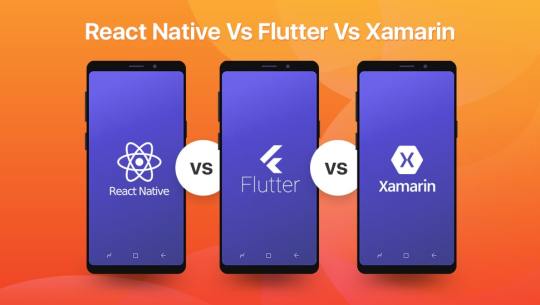
View On WordPress
0 notes
Text
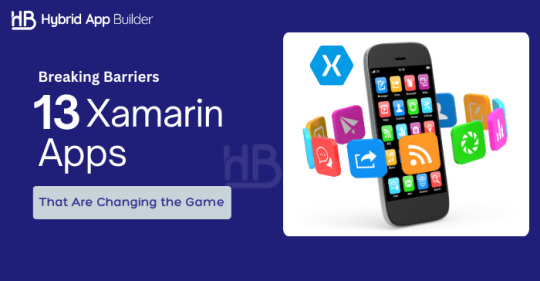
Dive into the world of Xamarin App Development with these 13 groundbreaking applications setting new standards in the industry. Explore innovation at its finest.
#xamarin#app development#innovation#xamarin app development#application#business and industry sectors
0 notes
Text

Experience Seamless App Development with Xamarin Developers
Unlock a seamless app development journey with our team of Xamarin developers. Deliver cross-platform excellence and innovation for your mobile apps. Let's create together!
#App Development#Seamless App Development#Xamarin Developers#Xamarin App Development#Hire xamarin developers#mobile application development
0 notes
Text
The Reason Xamarin Mobile Application Development Is A Game-Changer In 2023!
Mobile apps are progressingexponentially, and Xamarin is at the forefront of the race! It's an innovative and versatile framework that can help create cross-platform apps that run seamlessly on any device. But what sets Xamarin apart? How does it work? Our comprehensive Xamarin mobile application development guide answers all your questions and rigorously scrutinizes its features. Learn why it's the go-to platform for app innovators in the global context.
Writing two separate codebases for your mobile app is a vicious nightmare!
We feel you! That's why Xamarin is being recommended everywhere and has already become every developer's most preferred cup of tea. With this platform, you can build an app for Android and iOS simultaneously. No more Java/Kotlin for Android and Swift/Objective-C for iOS. This significantly streamlines your workflow, saves you loads of precious time and eases up your overwhelming tasks.
By using C#, a swift and high-performance language, you can create one codebase for Android, iOS, and even Windows. With Xamarin mobile application development, you can reserve your cognitive bandwidth for more fruit-bearing obligations and cut unnecessary expenses. Why write the same code multiple times when you can perform it in a more relevant, hassle-free manner?
Are you wondering if Xamarin's cross-platform development compromises performance or user experience?
The answer is no! When developing an iOS app with Xamarin, your C# code is compiled into native ARM assembly code, ensuring efficient performance. Similarly, Xamarin uses Just-In-Time compilation for Android, which transforms C# code into native Android Intermediate Language (AIL) code at runtime, guaranteeing optimal performance.
This approach allows for the majority of your code, such as business logic and data access, to be shared across both platforms, while still being able to customize platform-specific code for UI and device features. This blend provides the best of both worlds, giving you the flexibility to create seamless and native experiences for your users.
As an app developer, you can significantly reduce your maintenance efforts with Xamarin.
Xamarin.Formsis one of the most valuable parts of Xamarin that provides a single-user interface for both Android and iOS devices. You don't have to sacrifice aesthetics with this feature. With its customizable UI controls and layouts, you can ensure that your app looks and feels brilliantly native on each platform, including buttons, lists, and complex navigation hierarchies. Xamarin.Forms will make the process minimal and will also allow you to focus on delivering a refined user journey.
With the feasibilityof writing platform-specific code when necessary, developers can handle all the features and optimizations required to create flawless experiences for their users. Moreover, with NuGet integration, adding libraries and third-party components to your project has never been easier.
The Xamarin Essentials library offers a set of cross-platform APIs for common device features, including geolocation, sensors, and file system access, making it easier to access device-specific functionalities in a cross-platform manner. But wait, there's more! You can now automate testing of your Xamarin app with Xamarin Test Cloud, which is now part of Visual Studio App Center. The cloud-based service tests your app on different devices and OS versions, ensuring it works correctly across the board.
With its profound and active community of developers, there are endless resources, libraries, and plugins available to streamline your app development process. And it's not just for enterprise applications – Xamarin can also be used for 2D game development.
And with its seamless integration with Microsoft's Azure cloud platform, you have access to top-notch cloud services for your app backend and data storage. As a great utility, Xamarin supports various continuous integration tools and platforms, making it easier to automate your mobile apps' build and testing processes.
Xamarin and Visual Studio integration just keeps getting better!
The advanced debugging and profiling tools streamline development processes and the simplified build and deployment across platforms ensures efficient app development. As developers, we know the importance of seamless integration and Xamarin is nailing it.
As developers, we're always on the lookout for tools that make our lives easier. That's why Xamarin is an indispensable part of our toolkit. Its ability to create cross-platform apps with shared codebase, deliver native experiences, and leverage a rich ecosystem of resources has changed the whole scenario for mobile app development. With Xamarin, we can develop powerful, smart, and cost-effective mobile applications that deliver excellence to users all over the globe. To remind you, Rensol's prudent team is dedicated to crafting exceptional user experiences that transcend normative fads. We take special interest in Xamarin mobile application development and our commitment to user engagement and contentment keeps us afloat. With our refined approach to UX design and UI, we're here to deliver nothing but the most promising in this trade. Contact us today for a great partnership deal!
0 notes
Text
Web to Mobile: Building Seamless Apps with .NET"
.NET is a effective, flexible, and open-supply developer platform created with the aid of Microsoft. It enables the creation of a huge range of applications—from computing device to cellular, net, cloud, gaming, and IoT. Over the years, .NET has evolved substantially and has become one of the maximum extensively used frameworks inside the software improvement enterprise.
Dot Net Programming Language

A Brief History of .NET
The .NET Framework become first delivered through Microsoft in the early 2000s. The original cause turned into to offer a steady item-oriented programming surroundings regardless of whether code became stored and finished locally, remotely, or via the internet.
Over time, Microsoft developed .NET right into a cross-platform, open-supply framework. In 2016, Microsoft launched .NET Core, a modular, high-performance, cross-platform implementation of .NET. In 2020, the company unified all its .NET technologies beneath one umbrella with the discharge of .NET five, and later persisted with .NET 6, .NET 7, and past.
Today, the unified platform is actually called .NET, and it allows builders to build apps for Windows, macOS, Linux, iOS, Android, and greater using a single codebase.
Key Features of .NET
1. Cross-Platform Development
One of the maximum tremendous features of present day .NET (publish .NET Core) is its ability to run on a couple of platforms. Developers can construct and deploy apps on Windows, Linux, and macOS with out enhancing their codebases.
2. Multiple Language Support
.NET supports numerous programming languages, together with:
C# – the maximum extensively used language in .NET development
F# – a purposeful-first programming language
Visual Basic – an smooth-to-analyze language, regularly used in legacy programs
This multilingual capability allows developers to pick out the nice language for their precise use cases.
3. Extensive Library and Framework Support
.NET offers a comprehensive base magnificence library (BCL) and framework libraries that aid the whole lot from record studying/writing to XML manipulation, statistics get entry to, cryptography, and extra.
Four. ASP.NET for Web Development
ASP.NET is a part of the .NET platform specially designed for net improvement. ASP.NET Core, the cross-platform model, permits builders to build scalable internet APIs, dynamic web sites, and actual-time packages the usage of technology like SignalR.
5. Rich Development Environment
.NET integrates seamlessly with Visual Studio, one of the most function-wealthy integrated development environments (IDEs) available. Visual Studio offers capabilities together with IntelliSense, debugging tools, challenge templates, and code refactoring.
6. Performance and Scalability
.NET is thought for high performance and scalability, especially with its guide for asynchronous programming using async/wait for and its Just-In-Time (JIT) compilation.
7. Secure and Reliable
.NET presents sturdy safety features, including code get entry to security, role-based protection, and cryptography training. It also handles reminiscence management thru rubbish series, minimizing reminiscence leaks.
Common Applications Built with .NET
1. Web Applications
With ASP.NET Core, builders can create cutting-edge, scalable internet programs and RESTful APIs. Razor Pages and Blazor are technology within ASP.NET Core that help server-facet and purchaser-facet rendering.
2. Desktop Applications
Using Windows Forms or Windows Presentation Foundation (WPF), builders can build conventional computing device applications. .NET MAUI (Multi-platform App UI) now extends this functionality to move-platform computer and cellular programs.
3. Mobile Applications
Through Xamarin (now incorporated into .NET MAUI), developers can create native mobile applications for Android and iOS the usage of C#.
4. Cloud-Based Applications
.NET is nicely-acceptable for cloud development, in particular with Microsoft Azure. Developers can build cloud-local apps, serverless capabilities, and containerized microservices the usage of Docker and Kubernetes.
5. IoT Applications
.NET helps Internet of Things (IoT) development, allowing builders to construct applications that engage with sensors and gadgets.
6. Games
With the Unity sport engine, which helps C#, developers can use .NET languages to create 2D, three-D, AR, and VR games.
Components of .NET
1. .NET SDK
The Software Development Kit includes everything had to build and run .NET packages: compilers, libraries, and command-line tools.
2. CLR (Common Language Runtime)
It handles reminiscence control, exception managing, and rubbish collection.
Three. BCL (Base Class Library)
The BCL offers center functionalities including collections, record I/O, records kinds, and extra.
4. NuGet
NuGet is the package manager for .NET. It lets in builders to install, manage, and share libraries without problems.
Modern .NET Versions
.NET five (2020): Unified the .NET platform (Core + Framework)
.NET 7 (2022): Further overall performance enhancements and more desirable APIs
.NET 8 (2023): Continued attention on cloud-native, cellular, and web improvement
Advantages of Using .NET
Cross-platform assist – construct as soon as, run everywhere
Large developer network – widespread sources, libraries, and frameworks
Robust tooling – especially with Visual Studio and JetBrains Rider
Active improvement – backed by using Microsoft and open-source community
Challenges and Considerations
Learning curve – particularly for beginners due to its giant atmosphere
Legacy framework – older .NET Framework tasks aren't like minded with .NET Core or more recent variations without migration
Platform differences – sure APIs or libraries might also behave in a different way throughout operating systems
Getting Started with .NET
To begin growing with .NET:
Install the .NET SDK from the legitimate .NET internet site.
Create a new project: Use the dotnet new command or Visual Studio templates.
Write code: Develop your logic the usage of C#, F#, or VB.NET.
#btech students#bca students#online programming courses#offline institute programming courses#regular colleges university#Dot Net Programming Language
2 notes
·
View notes
Text
Dev Log Feb 7 2025 - The Stack
Ahoy. This is JFrame of 16Naughts in the first of what I hope will turn out to be a weekly series of developer logs surrounding some of our activities here in the office. Not quite so focused on individual games most of the time, but more on some of the more interesting parts of development as a whole. Or really, just an excuse for me to geek out a little into the void. With introductions out of the way, the first public version of our game Crescent Roll (https://store.steampowered.com/app/3325680/Crescent_Roll juuuust as a quick plug) is due out here at the end of the month, and has a very interesting/unorthodox tech stack that might be of interest to certain devs wanting to cut down on their application install size. The game itself is actually written in Javascript - you know, the scripting language used by your web browser for the interactive stuff everywhere, including here. If you've been on Newgrounds or any other site, they might call games that use it "HTML5" games like they used to call "Flash" games (RIP in peace). Unfortunately, Javascript still has a bit of a sour reputation in most developer circles, and "web game" doesn't really instill much confidence in the gamer either. However, it's turning more and more into the de-facto standard for like, everything. And I do mean everything. 99% of applications on your phone are just websites wrapped in the system view (including, if you're currently using it, the Tumblr app), and it's bleeding more and more into the desktop and other device spaces. Both Android and iOS have calls available to utilize their native web browsers in applications. Windows and Mac support the same thing with WebView2 and WebKit respectively. Heck, even Xbox and Nintendo have a web framework available too (even goes back as far as Flash support for the Wii). So, if you're not using an existing game engine like we aren't and you want to go multi-platform, your choices are either A) Do it in something C/C++ -ish, or now B) Write it in JS. So great - JS runs everywhere. Except, it's not exactly a first-class citizen in any of these scenarios. Every platform has a different SDK for a different low-level language, and none of them have a one-click "bundle this website into an exe" option. So there is some additional work that needs to be done to get it into that nice little executable package.
Enter C#. Everyone calls it Microsoft Java, but their support for it has been absolutely spectacular that it has surpassed Java in pretty much every single possible way. And that includes the number and types of machines that it runs on. The DotNet Core initiative has Mac, Windows, and Linux covered (plus Xbox), Xamarin has Android, and the new stuff for Maui brought iOS into the fold. Write once, run everywhere. Very nice. Except those itty bitty little application lifetime quirks completely change how you do the initialization on each platform, and the system calls are different for getting the different web views set up, and Microsoft is pushing Maui so hard that actually finding the calls and libraries to do the stuff instead of using their own (very strange) UI toolkit is a jungle, but I mean, I only had to write our stream decompression stuff once and everything works with the same compilation options. So yeah - good enough. And fortunately, only getting better. Just recently, they added Web Views directly into Maui itself so we can now skip a lot of the bootstrapping we had to do (I'm not re-writing it until we have to, but you know- it's there for everyone else). So, there you have it. Crescent Roll is a Javascript HTML5 Web Game that uses the platform native Web View through C#. It's a super tiny 50-100MB (depending on the platform) from not having to bundle the JS engine with it, compiles in seconds, and is fast and lean when running and only getting faster and leaner as it benefits from any performance improvements made anywhere in any of those pipeline. And that's it for today's log. Once this thing is actually, you know, released, I can hopefully start doing some more recent forward-looking progress things rather than a kind of vague abstract retrospective ramblings. Maybe some shader stuff next week, who knows.
Lemme know if you have any questions on anything. I know it's kind of dry, but I can grab some links for stuff to get started with, or point to some additional reading if you want it.
3 notes
·
View notes
Text
Cross-Platform App Development Services: Breaking Barriers and Expanding Reach

In today's digital era, mobile applications have become an integral part of our lives. Whether it's for social networking, e-commerce, or productivity, mobile apps have revolutionized the way we interact with technology. However, developing an app that can cater to the diverse needs of users across different platforms can be a daunting task for businesses. This is where cross-platform app development services come into play.
What is Cross-Platform App Development?
Cross-platform app development is the process of building mobile applications that can run on multiple operating systems, such as iOS and Android, using a single codebase. Unlike native app development, which requires separate codebases for each platform, cross-platform development allows businesses to save time, resources, and effort by creating a single app that works across various platforms.
The Advantages of Cross-Platform App Development:
1. Cost-Effectiveness: Developing separate apps for different platforms can be expensive. Cross-platform development enables businesses to significantly reduce costs by reusing a single codebase across multiple platforms. This approach also minimizes the need for hiring platform-specific developers, resulting in further cost savings.
2. Time Efficiency: Cross-platform frameworks and tools provide developers with the ability to write code once and deploy it on multiple platforms. This drastically reduces the time required for development, testing, and deployment, allowing businesses to bring their apps to market faster and gain a competitive edge.
3. Consistent User Experience: With cross-platform development, businesses can ensure a consistent user experience across different platforms. By using a single codebase, developers can maintain design and functionality consistency, resulting in a seamless experience for users, regardless of the device or operating system they use.
4. Wider Market Reach: By developing a cross-platform app, businesses can reach a broader audience as their application can run on various devices and operating systems. This expanded market reach enhances brand visibility and increases the potential user base, leading to greater customer acquisition and revenue generation.
5. Easy Maintenance: Updating and maintaining separate codebases for different platforms can be challenging. Cross-platform development simplifies the maintenance process as changes and updates can be applied to a single codebase, ensuring consistency and reducing the chances of introducing bugs or inconsistencies across platforms.
Choosing the Right Cross-Platform Development Framework:
When it comes to cross-platform app development, there are several frameworks available, each with its unique features and capabilities. The choice of framework depends on various factors such as project requirements, target audience, performance needs, and developer expertise. Some popular cross-platform frameworks include React Native, Flutter, Xamarin, and Ionic.
Partnering with Cross-Platform App Development Services:
While cross-platform app development offers numerous benefits, it requires technical expertise and experience to leverage the full potential of these frameworks. This is where partnering with cross-platform app development services can make a significant difference.
Professional app development services specializing in cross-platform development have the necessary skills, knowledge, and resources to create high-quality, feature-rich applications that can run seamlessly across multiple platforms. These services understand the intricacies of various frameworks, ensuring optimal performance and user experience.
Additionally, cross-platform app development services keep up with the latest industry trends and advancements, allowing businesses to incorporate cutting-edge features and technologies into their applications. They also provide ongoing support, maintenance, and updates, ensuring that the app remains up-to-date and compatible with the latest devices and operating system versions.
Conclusion:
Cross-platform app development services have emerged as a game-changer for businesses looking to develop mobile applications that can reach a wider audience while optimizing costs and development time. By leveraging the benefits of cross-platform development, businesses can break barriers, expand their reach, and deliver engaging experiences to users across multiple platforms.
Whether you are a startup or an established enterprise, partnering with cross-platform app development services can unlock new opportunities and drive your business forward in the ever-evolving mobile landscape.
Source
#AppDevelopment#WebDevelopment#MobileApps#WebApps#SoftwareDevelopment#UIUXDesign#MobileDevelopment#WebDesign#CodeLife#TechSolutions#AppDesign#MobileTech#WebDev#DigitalTransformation#ResponsiveDesign#Innovation#TechIndustry#AppSolutions#WebSolutions#CodeNerds
23 notes
·
View notes
Text
Contract Hiring Mobile App Developers in 2024-25
In this digitally dependent world, one of the fastest-growing technologies is the introduction of mobile apps for brands. Businesses utilize apps to drive creation, quick access to information, customer communication, and engagement with the brand.
The growth rate of mobile-based applications is expected to be 14.3% from the year 2024 to 2030 – Grand View Research
This makes mobile app developers one of the most in-demand skills in the market. For a successful project, the presence of skilled professionals is essential and businesses are also inclined to hire app developers remotely. Read the complete guide and let’s reveal how contract hiring mobile app developers is beneficial for businesses.
Why is Contract Hiring Beneficial?
When to Hire Mobile App Developers on Contract and Not on Employment?
Identifying the Technology & Scope of Work for the Mobile App Project
Sources of Contract Hiring
Interviewing and Screening Candidates
Ideal Terms & Clauses for Contract Hiring
Setting up effective Remote Communication and Collaboration
Conclusion
Why is Contract Hiring Beneficial?
Contract work also commonly known as the gig economy is highly popular in the market. Businesses can easily fill the temporary skill gap in the company by indulging with contract workers on project to project basis.
However, the key aspect is that businesses should know when to opt. to hire remote app developers on a contract basis.
When to Hire Mobile App Developers on Contract and Not on Employment?
Project & Talent wise need only
If your project needs short-term assistance from a developer it’s best to hire contractors. And, if the requirements increase, you can scale up the work with the hired professional.
Cost Considerations
Organizations easily save money and resources by opting for contract developers instead of permanent employees. If you’ve tight budgets and short-term requirements, this would be the best option.
Requirement of a Specialized Skill
Contract developers are often specialized in one specific skill like React Native or Swift. When the project is dependent on one skill that you do not have in-house, then you can hire a professional from a pool of Talents who best fits your requirements.
Identifying the Technology & Scope of Work for the Mobile App Project
Before you start hiring mobile app developers, it’s critical to understand the scope of the app and project requirements in detail.
Understand the Problem the App solves and for whom
Perform market research to identify the need for an app among your target audience. Plan how the app is going to benefit the users and what is a list of problems that need to be solved via developing the app. The classic example could be the problem of consumer interaction. With the app’s introduction, a brand can promote more engagement and interaction with the target audience.
Understand the project requirements and related core features
Discuss with decision-makers what features the app must have for the users (the core feature and the differentiable features). Decide on the platforms the App will support (android, iOS, or both). You must also finalize project details beforehand like deliverables and deadlines.
Choose the right Technology Stack
Selecting the right technology stack sets the correct foundation for the app. Consider the purpose of the app while keeping the target audience in mind and select either a native or cross-platform stack.
1. Native Mobile App Development ensures optimal performance and ‘platform-specific’ capabilities.
iOS: Swift or Objective-C for programming, Xcode for development, UIKit for interface design.
Android: Kotlin or Java for programming, Android Studio for development, Android SDK for interface design.
2. Cross-Platform Mobile App Development ensures quick deployments, reusability of codes, and coverage of both platforms (Android & iOS).
React Native, Flutter, or Xamarin Frameworks offer the ability to write code once and deploy it across multiple platforms.
3. Other Tools, Libraries, and Databases to be identified might include Android Studio, Xcode, Firebase, Restful, SQLite, Room DB, SQL, MongoDB, Redux, etc.
Outline the Scope of Work & Document in detail
A well-defined scope of work sets the wheels in motion for an app development project. The clear SOW acts as a roadmap for the developer and client and reduces any chances of misunderstanding in the process.
Also well document the Team requirements, their roles & responsibilities, features & functionalities, tasks & deliverables, milestones & deadlines, expectations for UI/UX designs, testing guidelines, deployment & maintenance guidelines, etc.
Sources of Contract Hiring
Here are a bunch of options that one can select from to hire mobile app developers in 2024.
Leveraging Specialized Platforms,
There are freelance platforms available in the market like Upwork, and Fiverr, that have professional freelancers who can provide you with one-time developer services.
IT Agencies (B2B contract Hiring)
Consider hiring IT agencies like Sprybit that have a pool of talent who are not only pre-screened but also reliable for the project.
Networks
Ask in your Network, post on Facebook – LinkedIN – Reddit groups, reach out to Industry people, and ask for references.
Interviewing and Screening Candidates
Following a pre-decided screening process is essential to finding the right talent for your organization.
Review Past Work/Portfolio
Make sure to review the candidate’s portfolio related to the mobile development projects. Examine the projects that require similar skill sets as compared to your project and judge their proficiency. You can also inquire about those projects and codes to understand their level of knowledge.
Consider requesting some sample codes. The GutHub links can act as an excellent proof of skills. This step is necessary to make a calculated decision.
Screening of Technical Skill
Shortlisted candidates must be proficient in technical skills according to the project requirements. Hiring managers must conduct the right assessment that ensures the presence of skill expertise.
These assessments must be practical and should involve coding for varied purposes. With this, you can understand data structures and algorithm knowledge in the candidate.
Identify other important factors
Apart from technical skills, other non-technical factors are essential to be considered during the hiring process. Check the candidate’s communication skills to ensure they will be able to communicate their ideas and plans with other team members. Candidates must also possess problem-solving skills to navigate technical errors in codes if required.
There are multiple design principles for mobile apps to enhance user experience. Check if the app developer is aware of such technicalities to select the best possible resource for your project.
Ideal Terms & Clauses for Contract Hiring
Whether you are a newbie or an experienced professional; while contract hiring mobile app developers; the ideal terms to keep your data, time, money & idea safe remain an unmissable necessity.
Hiring from a Freelance Portal does check many boxes with their well-established policies and processes; which might be good but not always foolproof. Hiring freelancers directly or from IT Agencies engages us in co-building Terms & Conditions on mutual consensus or are pre-defined with our experience as a Vendor Compliance Policy. But, all-in-all, making sure that every safety measure for our Project is taken care of remains our sole responsibility.
Payment Terms
Unlike full-time employees, one can’t pay to contract professionals every month. Select among a wide range of options like hourly-rate, and project-basis. Transparency from the very beginning will help smooth project completion.
IP rights
Before starting the collaboration, clarity on IP i.e. intellectual property is essential. As in who is the owner of code, design, app interface, etc should be agreed on to avoid disputes in the future.
Confidential & Non-disclosure agreements
Once you allot work to these contract workers, you will be sharing confidential details of the company. Make an advance agreement and ask them to sign it before commencing the work.
Project Timeline & Quality Assurance Standards
Maintain the quality of the project by deciding in prior about project deadlines, submissions, and code quality in terms of programming languages.
Termination clause
State a prescribed reason for when can either of the parties end the agreement. This brings clarity to the table regarding moral, ethical and professional expectations your Organization has.
Dispute Resolution
In rare cases, the client and candidate might go into a dispute that needs to be solved for the project’s betterment. Laying out steps to clear disputes and solve them will act as guidance in case it’s required.
Indemnity & Liability
It is important to outline the obligations & responsibilities of each party during any case of losses, damages and/or legal claims arising during the course of the project.
Governing Law & Governing Body
Involving government laws, rights, and bodies can help in resolving disputes and save the project’s future. This way both parties can come to the same conclusion under legal principles.
Setting up effective Remote Communication and Collaboration
Remote work culture creates room for misunderstanding and unclear targets. However, the issue can be tackled if there’s a pre-decided communication system planned. From work allotment to final project submission, an effective communication plan benefits all the parties involved in the project.
These can be achieved by establishing communication, collaboration & project management tools for your Project:
Inbuilt communication channels of Freelance Platforms
Slack
Microsoft Teams
Zoom
Google Meet
Jira
Asana
Trello
Basecamp
Google Workspace
Dropbox
Microsoft 365
Notion
Conclusion
Organizations’ idea to hire mobile app developers on Contract is spreading like a forest fire. Businesses now have access to partner freelancers and contract workers for short periods with ideal skills, and reliable talent.
Before starting your journey on the same path, make sure to remain transparent and pre-decide the essential factors like payment, timelines, IP & communication; and finally proceed to give life to your mobile app.
#hire remote developers#hire developers#hire mobile app developers#android app developers#ios app developers#contract hire developers#hire developers on contract#remote developers for hire#hire dedicate remote developers#hire pre vetted remote developers
2 notes
·
View notes
Text
Dot Net Training 101: From Novice to Ninja - Level Up Your Coding Skills Today!
Are you a coding enthusiast looking to enhance your skills in the dynamic world of software development? Look no further! In this article, we will take you on an exciting journey from being a novice to becoming a coding ninja through comprehensive Dot Net training. Whether you're a beginner or have some programming experience, this guide will equip you with the knowledge and tools necessary to thrive in the field of IT.

Why Dot Net Training?
Bridging the Gap between Education and Industry Demands
One of the primary reasons to pursue Dot Net training is its high demand in the IT industry. With technological advancements progressing at an unprecedented pace, employers seek professionals well-versed in Dot Net technologies to meet their business needs. By acquiring Dot Net skills, you'll equip yourself with a valuable asset that can open doors to rewarding job opportunities.
Exploring the Versatility of Dot Net
Dot Net, a powerful framework developed by Microsoft, offers a wide range of tools and functionalities. From web development to desktop applications, mobile apps to cloud solutions, Dot Net empowers developers to craft robust and scalable software solutions. Through training, you'll gain the ability to leverage the versatility of Dot Net across various domains, expanding your horizons in the IT field.
Continuous Learning and Skill Growth
In the ever-evolving landscape of technology, it's crucial to stay up-to-date with the latest trends and advancements. Dot Net training provides an opportunity for continuous learning, allowing you to sharpen your coding skills and stay ahead in the competitive market. With regular updates and new features being added to the framework, embracing Dot Net training ensures that you're constantly equipped with the knowledge required to succeed.
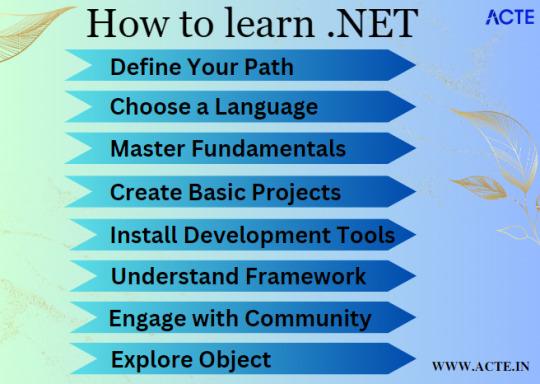
Getting Started: Foundations of Dot Net
Understanding the Dot Net Framework
Before diving into the intricacies of Dot Net programming, it's essential to grasp the foundation of the Dot Net framework. Dot Net encompasses a collection of programming languages, libraries, and tools that provide a highly flexible and efficient environment for developing software applications. It simplifies the development process and enhances productivity by offering a unified platform to build, deploy, and run applications.
Mastering the C# Programming Language
C# (pronounced as "C sharp") is the primary programming language used in Dot Net development. Familiarizing yourself with C# is crucial for becoming a proficient Dot Net developer. C# combines the power of simplicity and versatility, making it an ideal language for developing various types of applications. Through structured learning and practice, you'll become adept at writing clean, efficient, and maintainable code using C#.
Navigating the Dot Net Ecosystem
To become a skilled Dot Net developer, you need to explore the vast ecosystem surrounding the framework. Discovering popular development environments like Visual Studio and Visual Studio Code can significantly enhance your productivity. Additionally, becoming well-versed in various Dot Net libraries and frameworks, such as ASP.NET for web development or Xamarin for cross-platform mobile development, opens doors to diverse career opportunities.
Leveling Up: Advanced Dot Net Concepts
Unlocking the Power of Object-Oriented Programming (OOP)
Mastering object-oriented programming is an essential milestone on your journey to becoming a Dot Net ninja. OOP helps in building modular, reusable, and structured code by organizing data and behavior into objects. Understanding and implementing OOP principles, such as encapsulation, inheritance, and polymorphism, will enable you to design scalable and maintainable software solutions.
Embracing Agile Development and Continuous Integration
In the fast-paced world of software development, it's crucial to adopt agile methodologies and embrace continuous integration. Agile practices ensure efficient collaboration, adaptability, and faster delivery of high-quality software. By familiarizing yourself with agile methodologies like Scrum or Kanban and incorporating continuous integration tools like Azure DevOps or Jenkins, you'll become an efficient and valued member of any development team.
Exploring Advanced Dot Net Technologies
As your Dot Net journey progresses, it's important to explore advanced technologies within the framework. Dive into topics such as ASP.NET Core for building modern web applications, WPF for creating rich desktop experiences, or Entity Framework for seamless database integration. By expanding your knowledge in these areas, you'll gain a competitive edge and the ability to tackle complex
By embarking on this path, you've taken the first step towards enhancing your coding skills and becoming a Dot Net ninja with ACTE Technologies. Keep in mind that practise and ongoing learning are the keys to success. Stay curious, embrace new technologies, and never stop leveling up your coding skills.
5 notes
·
View notes
Text
PWA vs Native, Hybrid, SPA, MP: A Complete App Development Guide
In today's digital age, having a mobile app for your business is essential to stay ahead of the competition and cater to the growing needs of mobile users. However, when it comes to an app development company, there are several options to consider; one of them is Nivida Web Solutions Private Limited. Among the various approaches available, Progressive Web Apps (PWAs), Native apps, Hybrid apps, Single-Page Applications (SPAs), and Multi-Platform apps (MP) are the most popular choices. Each of these options has its own strengths and weaknesses. In this comprehensive app development guide, we will compare and contrast these different approaches to help you make an informed decision.
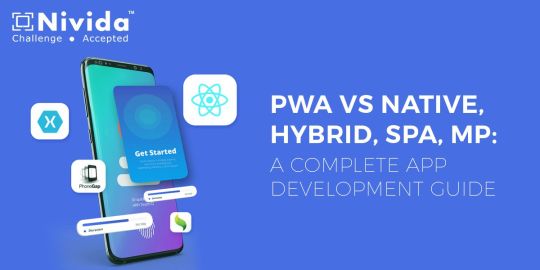
Progressive Web Apps (PWAs):
PWAs are web applications that are designed to look and function like native mobile apps. They are built using web technologies such as HTML, CSS, and JavaScript and are accessible through a web browser. PWAs are highly responsive, installable, and can work offline, making them an excellent choice for businesses looking to reach a wider audience across multiple platforms. Additionally, PWAs can be easily updated without requiring users to download new versions.
Native Apps:
Native apps are developed for specific platforms like iOS or Android using platform-specific languages (Swift or Objective-C for iOS, Java or Kotlin for Android). They offer the best performance, user experience, and access to device-specific features like camera, GPS, and push notifications. However, developing native apps requires separate codebases for different platforms, resulting in higher development costs and longer development cycles.
Hybrid Apps:
Hybrid apps are a combination of web and native apps. They are built using web technologies like HTML, CSS, and JavaScript and are wrapped in a native shell that enables them to be distributed through app stores. Hybrid apps provide a balance between cost-effectiveness and access to native features. However, they may not deliver the same performance as native apps, and certain device-specific functionalities might be limited.
Single-Page Applications (SPAs):
SPAs are web applications that load a single HTML page and dynamically update the content as users interact with the app. They offer a seamless user experience similar to native apps and can be accessed through web browsers. SPAs are easier to develop and maintain compared to native apps, but they may not provide the same level of performance and access to device features.
Multi-Platform Apps (MP):
Multi-platform apps are developed using cross-platform frameworks like React Native, Flutter, or Xamarin. These frameworks allow developers to write code once and deploy it across multiple platforms, saving time and effort. Multi-platform apps can achieve near-native performance and provide access to device features, making them a popular choice for businesses targeting multiple platforms.
When considering app development companies in India or Gujarat, it's essential to find a partner that understands your specific requirements and has expertise in the chosen development approach. Android App development companies in India and Gujarat offer a wide range of services, including native app development, hybrid app development, and PWA development. Similarly, Mobile App development companies in India and Gujarat can provide expertise in developing SPAs and MP apps.
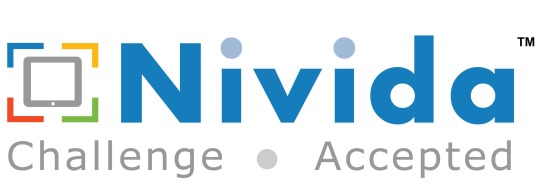
Before choosing an app development approach, consider factors such as budget, target audience, performance requirements, and time-to-market. Each approach has its own pros and cons, and the decision should align with your business goals and objectives. Consulting with a reputable app development company, Nivida Web Solutions Private Limited can help you navigate through these choices and make the right decision for your business.
In conclusion, the choice between PWAs, Native apps, Hybrid apps, SPAs, and MP apps depends on various factors such as performance, cost, development time, and target audience. Each approach has its own merits, and it's important to evaluate them based on your specific needs when selecting an app development company in India.
#eCommerce development company in India#eCommerce development Companies in Gujarat#Mobile App development Companies in India#Mobile App development company in Gujarat#Android App development Companies in India#Android App development company in Gujarat#Digital Marketing company in India
6 notes
·
View notes
Text
World-Class Mobile App Development for a Global Audience

In today’s hyper-connected digital economy, mobile apps are no longer optional—they’re essential. Whether it’s for eCommerce, healthcare, logistics, or finance, mobile applications are redefining how businesses operate and how customers engage. The demand for high-quality mobile app development services is growing rapidly, driven by the need to reach diverse audiences across multiple countries and platforms. Organizations looking to make a real impact must now think globally while executing locally, ensuring their apps are not just functional but also tailored for a wide range of users across different cultures and regions.
The Need for Global-Ready Apps
The digital marketplace is vast, and the most successful mobile apps are those that transcend borders. This requires more than just language translation. Global-ready mobile applications must be designed with cultural relevance, regulatory compliance, performance optimization, and accessibility in mind. From payment gateway integrations specific to local markets to UI/UX elements that reflect regional user behavior, going global with your app means making it feel local to every user, wherever they are.
Creating such experiences demands a development process that is deeply rooted in research, strategy, and modern technology. Businesses must work with teams that understand the nuances of international markets and can adapt their approach to deliver personalized, high-performing mobile solutions.
Cross-Platform Compatibility
With a global audience comes platform diversity. Users may access your app through Android in one country and iOS in another. This makes cross-platform compatibility a critical component of any mobile development strategy. Technologies like Flutter, React Native, and Xamarin enable developers to build apps that work seamlessly across multiple devices without compromising performance or user experience.
By choosing the right tech stack and development framework, businesses can significantly reduce time-to-market, maintain consistent branding, and ensure that updates and features roll out simultaneously across all platforms.
Localized User Experience
Localization is far more than just converting text into another language. It involves adapting the app’s content, design, and functionality to align with the cultural expectations of users in each target market. From layout preferences to color symbolism, every detail matters. For instance, a design that works well in Western markets may not resonate with users in Asia or the Middle East.
Smart localization enhances user engagement and boosts app adoption rates. It’s an investment in user satisfaction and brand loyalty, making your app more accessible and relatable to a broader audience.
Security and Compliance Across Borders
When launching a mobile app globally, data privacy and legal compliance are not optional. Different regions have different regulations—such as GDPR in Europe, HIPAA in the United States, and PDPA in Asia-Pacific countries. A world-class mobile app must be designed with data protection, user consent, and secure data storage in mind from the very beginning.
Security features like two-factor authentication, end-to-end encryption, and regular vulnerability assessments are vital. They not only protect your users but also establish trust in your brand across international markets.
Agile and Scalable Development
To stay competitive in the global app landscape, development must be agile and scalable. Agile methodologies enable faster iterations, quicker feedback loops, and adaptive planning. This approach is especially important when launching in multiple regions, as it allows teams to respond rapidly to user feedback and market changes.
Moreover, scalability is crucial. Your app should be built on an architecture that can handle increasing traffic, new features, and integration with third-party systems without degrading performance.
Data-Driven Decision Making
Analytics play a pivotal role in optimizing mobile apps for global users. From usage patterns to feature adoption rates, real-time data helps businesses understand what’s working and what’s not in each region. Armed with this knowledge, teams can refine user flows, improve retention, and boost conversions.
Personalized recommendations, behavioral targeting, and A/B testing can all be driven by data, helping businesses deliver more value to users in every corner of the world.
Partnering with the Right Experts
Launching a successful app on a global scale requires the right strategic and technical partners. A world-class mobile app development company brings not only coding expertise but also a deep understanding of international markets, scalable architecture, and end-user psychology. From ideation to post-launch support, having a skilled and experienced team ensures your app stands out in a crowded global marketplace.
By choosing a partner that aligns with your business goals and understands the nuances of global app deployment, you set the stage for sustainable growth and long-term success.
#mobile app development company#software development company#mobile application development company#mobile application development services
0 notes
Text
The Future of Cross-Platform App Development
In recent years, cross-platform app development has gained significant traction among businesses aiming to reach wider audiences while optimizing development costs.
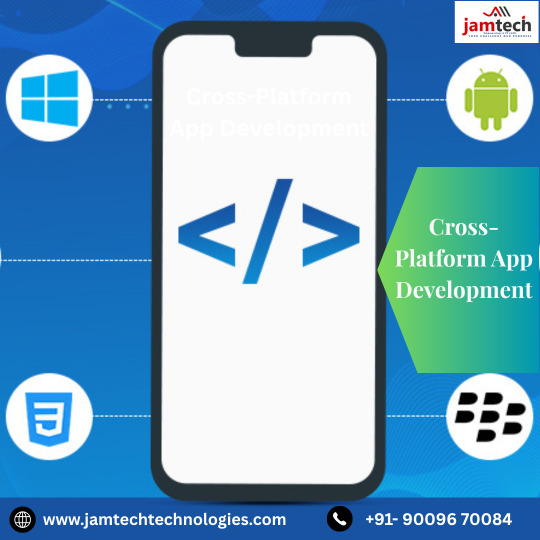
With rapid technological advancements, the future of cross-platform app development is set to transform how developers build, deploy, and maintain mobile and web applications. This article explores the evolving landscape, key trends, and the long-term benefits of adopting cross-platform development strategies.
Understanding Cross-Platform App Development
Cross-platform app development refers to the process of building applications that can run on multiple operating systems (primarily Android and iOS) using a single codebase. This approach contrasts with native app development, where separate codebases are required for each platform.
Popular cross-platform frameworks include Flutter, React Native, Xamarin, and Ionic. These tools enable developers to write one set of code and deploy it across multiple platforms, improving efficiency and reducing time-to-market.
Key Trends Shaping the Future
Improved Framework Capabilities Tools like Flutter and React Native continue to evolve, offering near-native performance, extensive UI capabilities, and support for web and desktop applications. This convergence of technologies is making cross-platform development more versatile and powerful.
Integration of AI and Machine Learning Integrating AI-powered features into cross-platform apps is becoming more accessible. Developers can now implement functionalities such as voice recognition, predictive text, and recommendation engines across platforms using common APIs and frameworks.
Increased Adoption of Low-Code/No-Code Platforms Businesses are leveraging low-code tools for mobile app development that support cross-platform capabilities. These platforms empower non-developers to participate in app creation, further accelerating digital transformation.
Focus on Performance Optimization Historically, cross-platform apps were criticized for their limited performance compared to native apps. However, new architectural improvements, such as Flutter’s Dart-based rendering and React Native’s new Fabric architecture, are closing this gap.
Cloud Integration and Backend-as-a-Service (BaaS) Cross-platform developers are increasingly utilizing cloud services and BaaS solutions like Firebase, AWS Amplify, and Azure Mobile Apps to simplify backend management and enhance scalability across platforms.
Benefits of Cross-Platform App Development
Faster Development Time: A shared codebase accelerates development cycles and reduces duplication of effort.
Cost Efficiency: Businesses save on development and maintenance costs by hiring a single team for all platforms.
Wider Reach: Applications can simultaneously target users on iOS, Android, web, and desktop platforms.
Unified User Experience: Cross-platform frameworks support consistent UI design and functionality across devices.
Challenges to Consider
Despite its advantages, cross-platform mobile app development faces challenges such as:
Limited access to some native APIs and features.
Potential performance trade-offs in highly complex or graphics-intensive applications.
Framework learning curves and dependency on community support.
Conclusion
The future of cross-platform app development looks promising, with continuous innovation in frameworks, tools, and practices. Businesses and developers should consider cross-platform strategies to improve development efficiency, reduce costs, and reach broader audiences. As cross-platform development frameworks become more robust, the line between native and cross-platform apps will continue to blur, making this approach increasingly viable for all types of projects.
#CrossPlatformDevelopment#AppDevelopment#MobileAppDevelopment#FlutterDevelopment#ReactNative#HybridAppDevelopment#SoftwareDevelopment#TechInnovation#FutureOfApps#DevCommunity
0 notes
Text
How Can Companies Optimize ROI by Converting Android Apps to iOS (or Vice Versa)?
Optimize ROI by Converting Android Apps to iOS
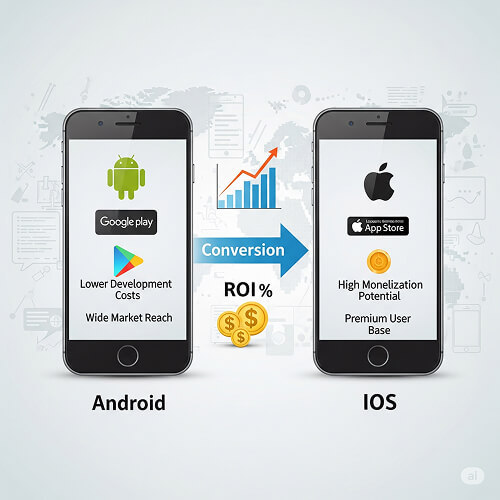
Introduction
In today’s mobile-first landscape, companies aiming to maximize their mobile app ROI must consider platform expansion. With Android dominating in user volume and iOS leading in revenue generation, converting your app from Android to iOS (or vice versa) can be a strategic move to reach a broader audience and boost profitability. This blog explores how app conversion can be a growth catalyst, helping businesses lower acquisition costs and increase user engagement across platforms.
Understanding Android to iOS App Conversion (or Vice Versa)
App conversion refers to the process of adapting an existing mobile application to operate on a different platform. Whether moving from Android to iOS or the reverse, this process involves more than just copying code. It includes reworking the UI/UX, adapting to platform-specific APIs, and ensuring functional parity across devices. Successful app conversion demands expertise in both Android and iOS app development to maintain performance and user satisfaction.
Top Reasons to Convert Android Apps to iOS (or Vice Versa)
Reach a wider audience: Tap into new user segments by expanding your presence to another platform.
Increase revenue potential: iOS users typically have higher lifetime value, while Android's larger user base can fuel ad-driven revenue models.
Improve brand presence: Being available on both platforms builds credibility and trust with users.
Maximize previous investments: Reusing assets and backend systems speeds up time-to-market and reduces development costs.
How App Conversion Improves ROI
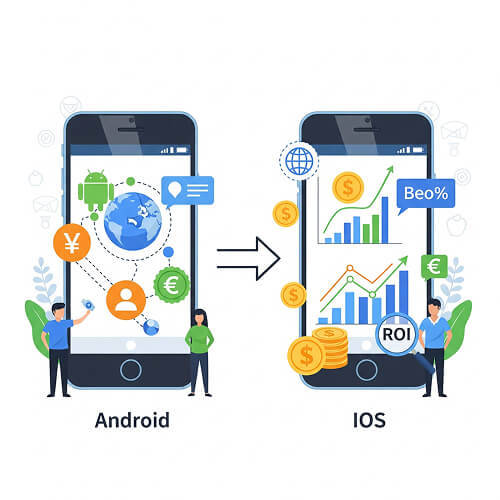
Converting your app allows you to scale without starting from scratch, which significantly lowers development costs. The ability to reach more users boosts installs, engagement, and revenue. Moreover, a cross-platform presence strengthens brand authority and opens doors to new monetization opportunities, like in-app purchases or subscriptions, ultimately maximizing return on investment.
Key Challenges in Mobile App Platform Conversion
UI/UX differences: iOS and Android have distinct design languages (Material vs. Human Interface Guidelines).
Technical variations: Differences in programming languages (Java/Kotlin for Android vs. Swift/Objective-C for iOS).
Third-party integration compatibility: Not all libraries and SDKs work identically across platforms.
Testing requirements: Each platform has its own device ecosystem and app store policies.
Steps to Successfully Convert Your Mobile App
Audit existing app code and features
Choose the right development approach (native or cross-platform)
Redesign UI/UX to fit the new platform standards
Adapt backend APIs and third-party services
Test extensively across devices and OS versions
Deploy to the relevant app store with optimized listings
Tools & Technologies for App Conversion
Flutter: Ideal for creating a single codebase for both platforms
Kotlin Multiplatform: Enables code sharing between Android and iOS
React Native: Popular framework for cross-platform mobile development
Xamarin: Microsoft-backed tool for .NET-based apps
Choosing the right tech stack depends on performance needs, UI complexity, and existing code structure.
Cost Estimation & ROI Forecasting
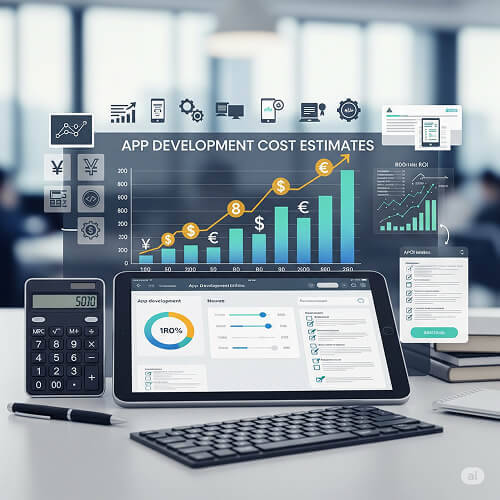
App conversion is typically more cost-effective than building a new app from scratch. Factors affecting cost include app complexity, UI redesign, and backend changes. Companies should calculate potential ROI by comparing conversion cost with projected increase in user acquisition, engagement, and revenue across the new platform.
Case Studies: App Conversion Success Stories
Example 1: A retail app that expanded from iOS to Android and saw a 40% increase in monthly active users
Example 2: A SaaS product that moved from Android to iOS, leading to a 30% boost in in-app purchases These examples showcase how strategic app conversion can result in measurable growth.
Tips to Maximize ROI After Converting Your App
Invest in App Store Optimization (ASO) for visibility
Launch targeted marketing campaigns on the new platform
Monitor analytics closely to track engagement and retention
Solicit user feedback to continuously refine the app experience
Conclusion
Converting your Android app to iOS or vice versa is not just a technical decision—it's a business strategy. When done right, it can significantly enhance user reach, reduce development overhead, and boost ROI. By partnering with an experienced app development company like CQLsys Technologies, you can ensure a smooth transition and unlock new growth opportunities across platforms.
#AppMigration#MobileStrategy#AppMarketing#TechROI#DigitalGrowth#AppScaling#iOSDeveloper#AndroidDeveloper#MobileSolutions#BusinessTech#UserEngagement#RevenueGrowth#AppUpgrade#TechTips#CQLsysTech#Innovation
0 notes